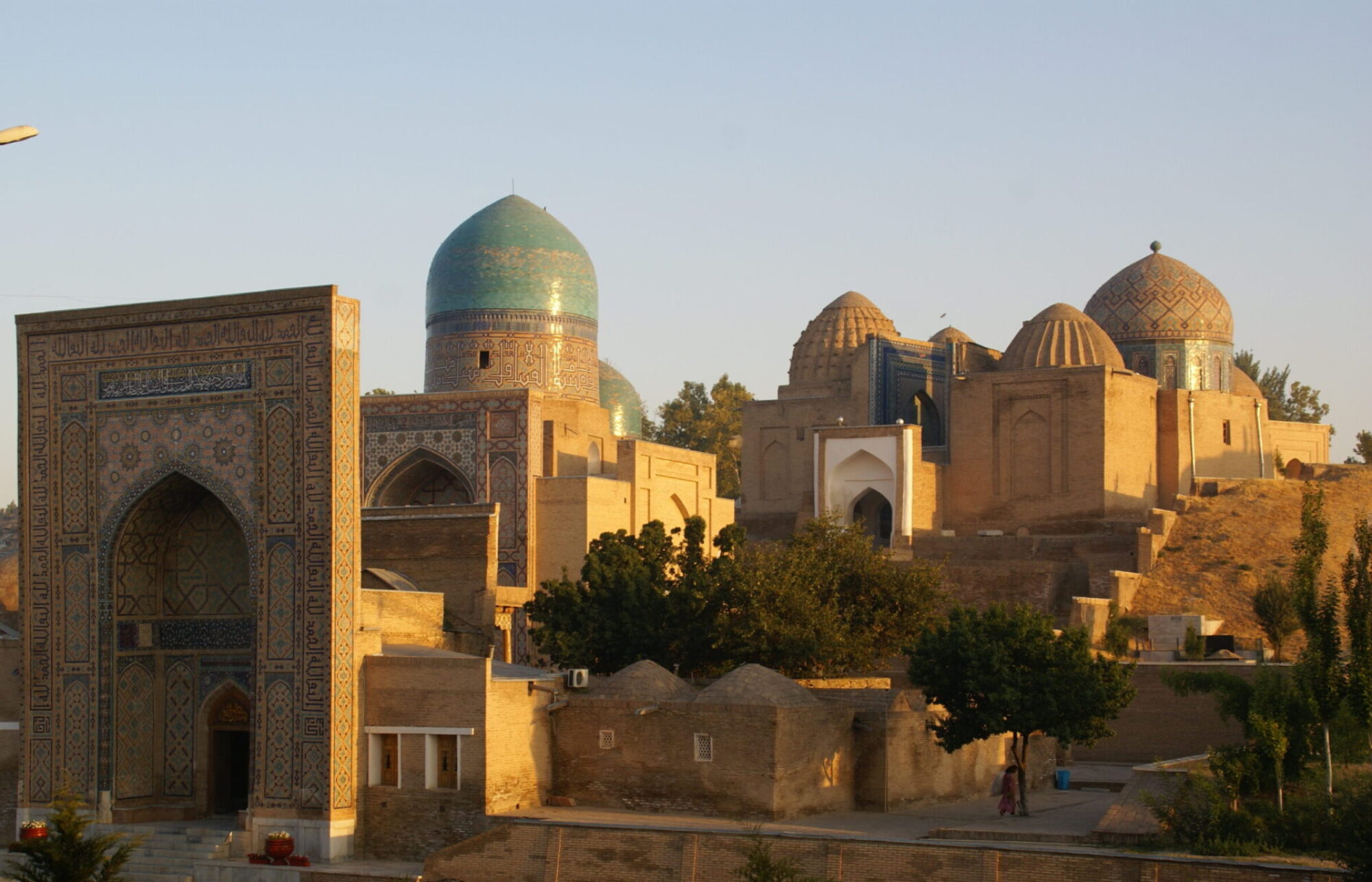The Samanid Mausoleum is the oldest surviving domed mausoleum in the Islamic world. Built between 892 and 943 AD as the resting place of Ismail Samani (r. 892-907), it is widely celebrated as a masterpiece of Islamic architecture. Albeit considered as one of the canonical buildings of the Muslim world, the Samanid mausoleum reflects the complex artistic and religious influences of the region. Based on a simple square plan with arched shallow recesses in the middle of each side, its layout is typical of Zoroastrian fire temples. Yet, its architecture has become a standard for subsequent mausoleums of Islamic rulers such as Sultan Sanjar (12th century, Marv), Öljeytü (early 14th century, Sultaniyya) and Timur (early 15th century, Samarqand).
The massive cube with a side of 10 m is covered with a central dome and four smaller domes in each corner, which follow the geometry of a Buddhist stupa. The corners are marked by four load bearing engaged columns that act as buttresses. The mausoleum is constructed with baked brick, which is used not only as the main building material but also as the primary material for decoration. The brick forms basket-weave patterns that cover the mausoleum’s surface. An arcaded gallery runs along the whole circumference. Each side of the arcade consists of ten arched openings with slender colonnettes accented with carved stucco. The interior walls are adorned with similar basket-weave brick patterns. The dome is connected to the cube of the mausoleum by means of four elaborately decorated squinches, which form an eight-sided zone of transition.
The Samanid Mausoleum was restored in the 1930s by Boris N. Zasypkin (1891-1955), who worked together with local craftsmen such as the Bukharan master Shirin Muradov (1880-1957). Although the main mausoleum was part of a larger cemetery in the middle of a residential area, all graves were removed and the adjacent houses were demolished in 1937. Between 1937-39 Zasypkin meticulously tried to preserve all authentic details by removing recent plaster layers, by reusing original bricks discovered during the archaeological excavations and by re-appropriating pieces of old mortar.

